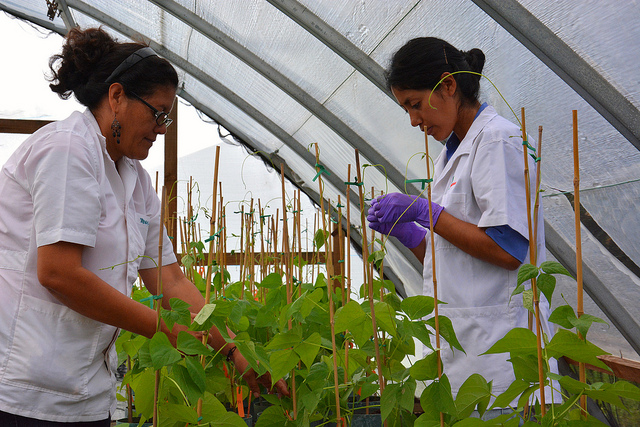OPINION: How Shifting to the Cloud Can Unlock Innovation for Food and Farming

LIMA, Dic 13 (IPS) - The digital revolution that is continuing to develop at lightening speed is an exciting new ally in our fight for global food security in the face of climate change.
Researchers have spent decades collecting data on climate patterns, but only in recent years have cost-effective solutions for publicly hosting this information been developed. Cloud computing services make the ideal home for key climate data – given that they have a vast capacity for not only storing data, but analysing it as well.3
This rationale is the basis for a brand new partnership between CGIAR, a consortium of international research centres, and Amazon web services. With 40 years of research under its belt, CGIAR holds a wealth of information on not just climate patterns, but on all aspects of agriculture.
By making this data publically available on the Amazon cloud, researchers and developers will be empowered to come up with innovations to solve critical issues inextricably linked to food and farming, such as reducing rural poverty, improving human health and nutrition, and sustainably managing the Earth's natural resources.
The first datasets to move to the cloud are Global Circulation Models (GCM), presently the most important tool for representing future climate conditions.
The potential of this new partnership was put to the test this week at the climate negotiations in Peru, when the CGIAR Research Programme on Climate Change, Agriculture and Food Security (CCAFS) hosted a 24 hour "hackathon", giving Latin American developers and computer programmers first access to the cloud-based data.
The challenge was to transform the available data into actionable knowledge that will help farmers better adapt to climate variability.
The results were inspiring. The winning innovation from Colombian team Geomelodicos helps farmers more accurately predict when to plant their crops each season. Gone are the days when farmers could rely on almanacs for predicting seasonal planting dates, as climate change has made these predictions unreliable.
The prototype programme combines data on historical production and climate trends, historical planting dates with current climate trends and short-term weather forecasts, to generate more accurate information about optimal planting dates for different crops and locations. The vision is that one day, this information could bedisseminated via SMS messaging.
Runners up Viasoluciones decided to tackle water scarcity, a serious challenge for farmers around the world as natural resources become more scarce. Named after the Quechua goddess of water, Illapa, the innovation could help farmers make better decisions about how much water to use for irrigating different crops.
The prototype application combines climate data and information from a tool that directly senses a plant's water use, to calculate water needs in real-time. In times of drought, this application could prove invaluable.
Farmers are in dire need of practical solutions that will help protect our food supply in the face of a warming world. Eight hundred million people in the world are still hungry, and it is a race against time to ensure that we have a robust strategy for ensuring these vulnerable people are fed and nourished.
By moving agricultural data to the cloud, developing innovations for food and farming will no longer be dependent on having access to expensive software or powerful computers on internet connection speeds.
Making sense of this "big data" will become progressively easier, and one day, farmers themselves could even take matters into their own hands.
Edited by Kitty Stapp
© Inter Press Service (2014) — All Rights Reserved. Original source: Inter Press Service
 Global Issues
Global Issues